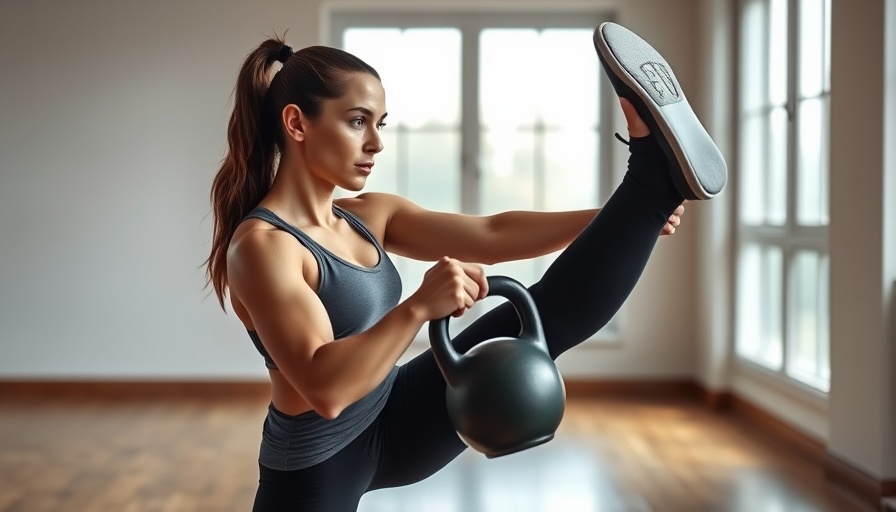
Unlock Lifelong Strength with Functional Exercises
As we age, the way we approach fitness must evolve. Simply lifting heavy weights or running at your fastest pace won’t guarantee longevity in movement and strength. Instead, functional exercises train our bodies to handle the demands of everyday tasks, ensuring we remain resilient, mobile, and strong throughout our lives. This article explores four essential exercises that enhance coordination, stability, and strength, paving the way for a healthier future.
Understanding Functional Fitness
Functional fitness encompasses exercises that mimic everyday activities. According to Aimee Victoria Long, a distinguished personal trainer in London, functional exercises ‘work multiple muscle groups and in various planes of motion’, creating a holistic readiness required for long-term functional fitness. This approach emphasizes movements that we perform daily, such as bending, lifting, and twisting, thus making it relevant to all age groups.
1. Master the Single-Leg Standing Balance
The ability to balance is crucial, especially as we grow older. The single-leg standing balance not only enhances balance but also helps prevent falls—a leading cause of injury among seniors. Joseph Webb, a chartered personal trainer, emphasizes the importance of developing coordination through movements like this.
To perform it, stand with feet hip-width apart, hands on hips. Lift one leg while maintaining a soft bend in the grounded knee. Focus your gaze on a single point to help maintain stability. Aim for 30 seconds on each side.
2. The Transformative Turkish Get-Up
The Turkish get-up is a remarkable exercise that serves as an excellent benchmark for total-body functional strength. It engages multiple muscle groups simultaneously and reflects real-life actions we frequently encounter, such as getting out of bed and bending down to pick something up.
To execute the Turkish get-up, lie on your back with one arm extended straight up. Keeping the same leg bent, press through your foot and elbow to rise into a seated position. Next, lift your hips and sweep your straight leg under to position yourself in a lunge. Stand tall, reversing the process to return to the floor. Perform four reps on each side to build strength and stability.
3. Strengthen Core with the Plank
The straight-arm plank is a fundamental movement that engages the core, shoulders, arms, glutes, hips, and legs, making it an essential part of building overall strength. A properly maintained plank supports postural integrity, crucial for injury prevention.
Start in a high plank, ensuring your wrists are under your shoulders and your body forms a straight line from head to heels. Engage your core, glutes, and legs, and hold for up to 60 seconds to establish a strong baseline for functional strength. This exercise is vital for maintaining stability and balance in all physical activities.
4. Engage in Movements that Foster Connection
Functional exercises thrive on their practicality but also offer an emotional component. Engaging in physical activities that replicate everyday movements brings a sense of normalcy and control, helping individuals feel more confident in their physical abilities as they age. These exercises can be particularly uplifting, as they foster a connection to one’s body, enhancing mental health along with physical strength.
The Long-Term Benefits of Functional Fitness
Building lifelong strength is not just about being strong today; it’s about preparing your body for the challenges of tomorrow. By incorporating functional exercises into your routine, you increase your independence, enhance your performance in daily activities, and reduce your risk of injuries—all pivotal for quality of life as you age. Furthermore, it's an act of self-care that reaffirms your commitment to health and mobility.
Incorporate Functional Training Now
Now is the time to start thinking critically about your fitness regimen. Don’t wait until age-related issues arise; proactively engage in functional exercises to safeguard your health. Consider integrating one or more of these exercises into your weekly routine, and feel empowered by the difference that functional fitness can make in your life.
With the outreach of communities aiming to promote health awareness, local classes focusing on functional fitness are also becoming more available. Embrace the opportunity to learn alongside others in your area!
 Add Row
Add Row 

 Add Element
Add Element 


 Add Row
Add Row 
 Add
Add 
Write A Comment